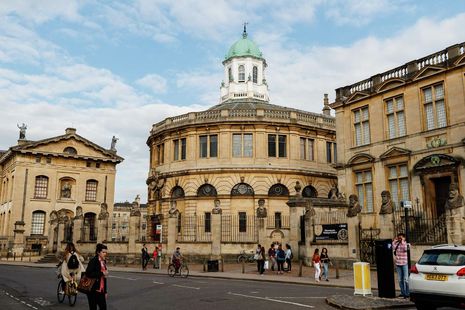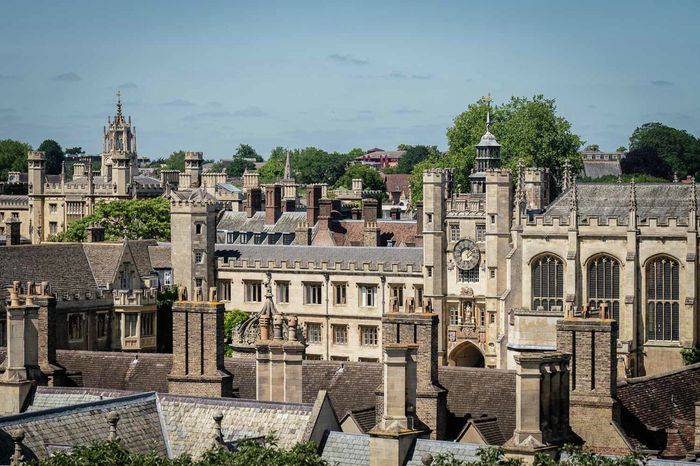Are middle-class students being “squeezed out” of Oxbridge?
Jack Durand argues that we may learn a lot from exploring positive discrimination as a solution to the structural inequalities of Oxbridge

The issue of Oxbridge access has once again reared its head. The Times Education Editor, Rosemary Bennett, responded to a parliamentary address given by Sir Michael Barber, chair of the Office for Students (OfS), channelling the alarm of the conservative middle classes upon discovering that privileged students could be “squeezed out of Oxbridge.”
These criticisms are based on the adoption of five-year ‘Access and Participation Plans’ across a number of top universities, including Oxford and Cambridge. These plans are designed to use geodemographic data to expand representation of students from regions of socioeconomic deprivation and low rates of progression to higher education.
However, the University’s statement of intent to increase the proportion of students admitted from the state (as opposed to private) sector has caused particular concern. Chris Millward, OfS Director of Access, has acknowledged that Cambridge’s refusal to expand the total number of places available will necessarily lead to a small cohort of socioeconomically advantaged candidates being “displaced”. Mike Buchanan, of the Headmasters’ and Headmistresses’ Conference, proposed such an expansion to prevent privately educated students becoming the victims of class-based discrimination.
“The fact is that many more students “deserve” to study at Oxbridge than there are places available.”
Independent schools, however, are undoubtedly over-represented. A Sutton Trust report from the end of 2018 found that the top 8 schools sent as many pupils to Oxbridge as three-quarters of all schools and colleges across the UK over the last 3 years. Additionally, their research has shown that such figures are not simply the result of any disparity in attainment at A-level, with disproportionate numbers of students from private schools applying and receiving offers relative to their equally “high-achieving” state school counterparts.
The fact is that many more students “deserve” to study at Oxbridge than there are places available. That is to say, a significant proportion of those rejected would likely thrive in such an environment and graduate with a strong degree in their chosen subject. As such, if the University is to expand, as Mr Buchanan demands, it should do so not to accommodate those few privileged candidates who are seen to have lost out, but to further efforts to make the University a more inclusive and diverse institution.
Positive discrimination is not a perfect system, and the problems it poses are, by now, well known. Reducing the rift in representation between privileged and disadvantaged students down to a matter of socioeconomic disparity represents an over-simplification of the issue. The opacity of the Oxbridge admissions process leaves little room to divine the extent to which the personal circumstances of underrepresented groups are taken into account.
“positive discrimination remains the most promising and pragmatic approach to widening access to elite institutions, such as Cambridge”
Minority ethnic groups, those who have endured prolonged physical and mental health issues, care leavers and traveller communities, among others, may be lost under a scheme focused so narrowly on financial and regional inequality. The challenge of a more nuanced system, however, in essentially attempting to quantify one’s level of disadvantage based on a selection of superficial characteristics, comes with its own cache of problems.
The claim most often levelled against positive discrimination is that it is an inadequate substitute for broader systematic change, encompassing not only universities but schools, local authorities and independent educational organisations, too. While this may be true, it does not change the fact that positive discrimination remains the most promising and pragmatic approach to widening access to elite institutions, such as Cambridge, before tangible steps towards true educational equality can me made.
If such a world - one in which the circumstances of one’s birth do not determine their educational opportunity - is possible, it is a distant reality. The proposed abolition of private schools is far from a perfect solution to educational inequality. Beyond divisions between the independent and maintained sectors, internal and regional disparities between the highest and lowest achieving state schools would be no less sheer. William Baldwin, headmaster of non-selective state Brighton, Hove and Sussex Sixth Form College, has pointed to the school’s employment of a full-time Oxbridge applications coordinator and provision of bespoke interview practice that allowed 57 students to achieve offers in 2018.
Furthermore, the varying availability of parental support and undisclosed private tuition, amongst other less visible factors, could serve to obfuscate what would still be a necessary process of contextualising an applicant’s raw results. At least the factors of private education, regional representation and socioeconomic background can be used to loosely, if not perfectly, assess a candidate’s level of educational advantage.
A purely meritocratic system to which positive discrimination needn’t be applied to address structural inequalities seems a utopian vision of the distant future. However, a Cambridge degree continues to provide a mandate to enact change, or at least wield influence, in this country: graduates go on to dominate the most powerful positions within journalism, politics and the judiciary.
Extending this mandate to those from ‘non-traditional’ Oxbridge backgrounds is surely a change for the better, rather than a discriminatory attempt to systematically undermine the hegemony of the privately educated elite.
 News / SU reluctantly registers controversial women’s soc18 December 2025
News / SU reluctantly registers controversial women’s soc18 December 2025 Features / Should I stay or should I go? Cambridge students and alumni reflect on how their memories stay with them15 December 2025
Features / Should I stay or should I go? Cambridge students and alumni reflect on how their memories stay with them15 December 2025 News / Dons warn PM about Vet School closure16 December 2025
News / Dons warn PM about Vet School closure16 December 2025 News / Cambridge study finds students learn better with notes than AI13 December 2025
News / Cambridge study finds students learn better with notes than AI13 December 2025 News / CUP announces funding scheme for under-represented academics19 December 2025
News / CUP announces funding scheme for under-represented academics19 December 2025









